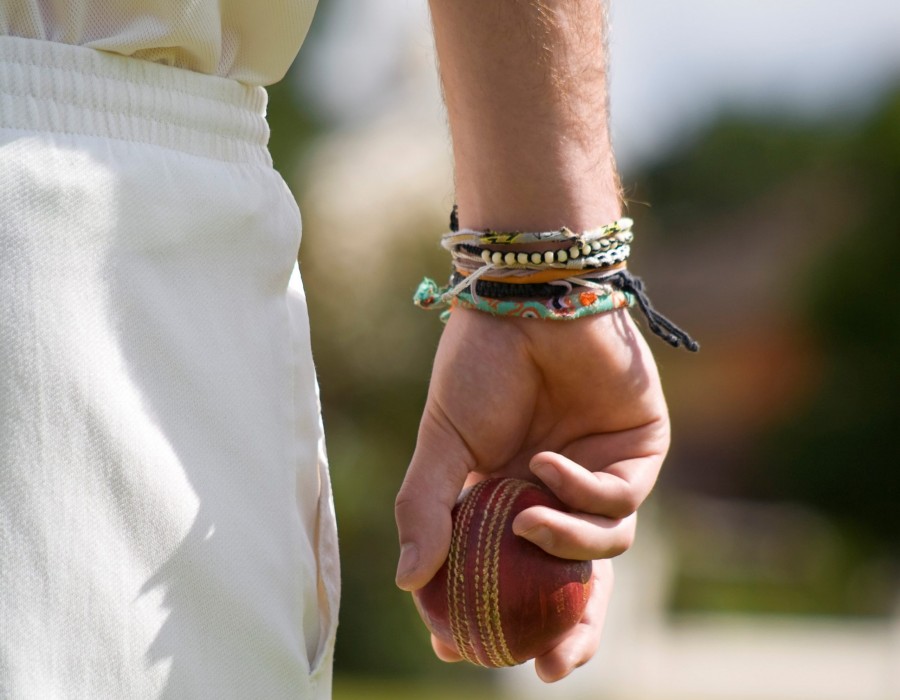Fitness and Performance
Cricket bowlers: the 5 best exercises for injury prevention

It’s well known that cricket bowlers (particularly fast bowlers) are more prone to injuries than any other cricketers…
As many of us have recently made our return to team sport, we thought we’d share the five best exercises fast cricket bowlers can do to avoid injury in training or on the field. Let’s make sure you’re fighting fit and ready for the game!
Most common injuries for fast bowlers
- Lower back pain (youngsters)
- Side strains (older players)
- Hamstrings and lower limb injuries
- Shoulder injuries
Training
Like most cricket players, fast bowlers must train to achieve better efficiency, biomechanics and to stay injury-free. According to Ian Pont in his book ’The fast bowlers bible’, most cricketers have the following type of routine to address their training needs (other than net practice):
- Strength and conditioning
- Plyometric and explosive training
- Cardio workouts
- Active recovery and core activation- Yoga, Pilates and foam rolling.
In this blog, we are going to focus more on strengthening and its principles, narrowing down to 5 best exercises for fast bowlers.
1. Planks
Planks (or planking) is the best form of exercise for fast bowlers irrespective of age. As discussed, lower back injuries are the most common injury you’ll find in young fast bowlers. The great benefit of this exercise is you don’t need any specialist equipment and it can be performed pretty much anywhere.
One advantage of planking is that it helps strengthen both your core and your lower back. In addition, there is less weight through the hands, making it is easier on the shoulders and pectoral girdle. Core exercises such as this help to improve the connective tissues in your abs, reducing the risk of injury.
Challenge yourself more by progressing the exercise using a gym ball or single-leg variations. You can add some variety to this exercise by performing a side plank to improve both fitness and core strengthening. Remember to do both sides to prevent any muscle imbalance.
2. Leg press: Single leg
In fast bowling, the maximum weight is taken in the delivery stride on the landing leg, which is opposite to the bowling arm. It’s common for more injuries to occur on that leg as opposed to the other. Add in some machine workouts to give some variety.
Not forgetting the landing leg, we recommend you increase the resistance whilst strengthening it. E.g. right arm bowlers should strengthen the left leg by increasing the resistance compared to the right and vice-versa.
This is a great exercise for those who are new to strength and conditioning training, or struggle to lift those heavy weights with good control. Remember to begin strengthening on machines before you progress to the free weights.
Additionally, I’d suggest you combine the above with working on your hamstring curls, quadriceps and hip adductors.
3. Dead lifts
The general rule for strength and conditioning in fast bowlers is to use heavy weights for lower limb training. Dead lifts are a great exercise to make the lower limbs more robust and stronger.
The advantages of doing so:
- Helps the lower limbs and posterior chain muscles
- Improves resilience and strength
- Helps prevent strains and injuries due to impact and loading
- Enhances fitness and plyometric strength
- Helps avoid lower limb injuries – mainly hamstring strains, ankle and knee joint problems.
You can progress this by introducing weighted squats to increase your strength and improve flexibility in your hamstrings.
4. Single leg Romanian dead lifts
The best test to identify bowlers who are at high risk of sustaining any back or lower limb injuries is a single left balance test. This is performed on an unstable surface (such as a bosu ball) with your eyes closed.
Single-leg Romanian dead lifts are ideal to tackle this issue as they focus more on your posterior chain – the muscles on the back of your body which include the hamstrings and glutes. Single leg deadlifts and Bulgarian split squats are other alternatives to these exercises.
5. Chest press
Fast bowling activates the muscles around your shoulder and chest, but it’s key you balance the levels of strength and flexibility in a fast bowler’s shoulder.
It’s advised by many trainers and coaches to avoid lifting any heavy weights for your upper limbs. By overdoing it, you put yourself at risk of additional shoulder related injuries.
We recommend the chest press as the best way to improve your strength and power. This can be performed with a variety of equipment, including dumbbells, barbells or on a bench with light weights. It’s commonly known for cricketers to use medicine ball throws. This adds a component of plyometrics to the chest press. Advantages include improved muscle activation and increased stability of your pectorals.
Are you a budding cricketer suffering from frequent injuries? Do you feel you have certain problems during training which need addressing? We can help by assessing your pain, mobility and strength, and prescribing a tailored rehab exercise programme to keep you on the field, performing harder and faster, for longer.